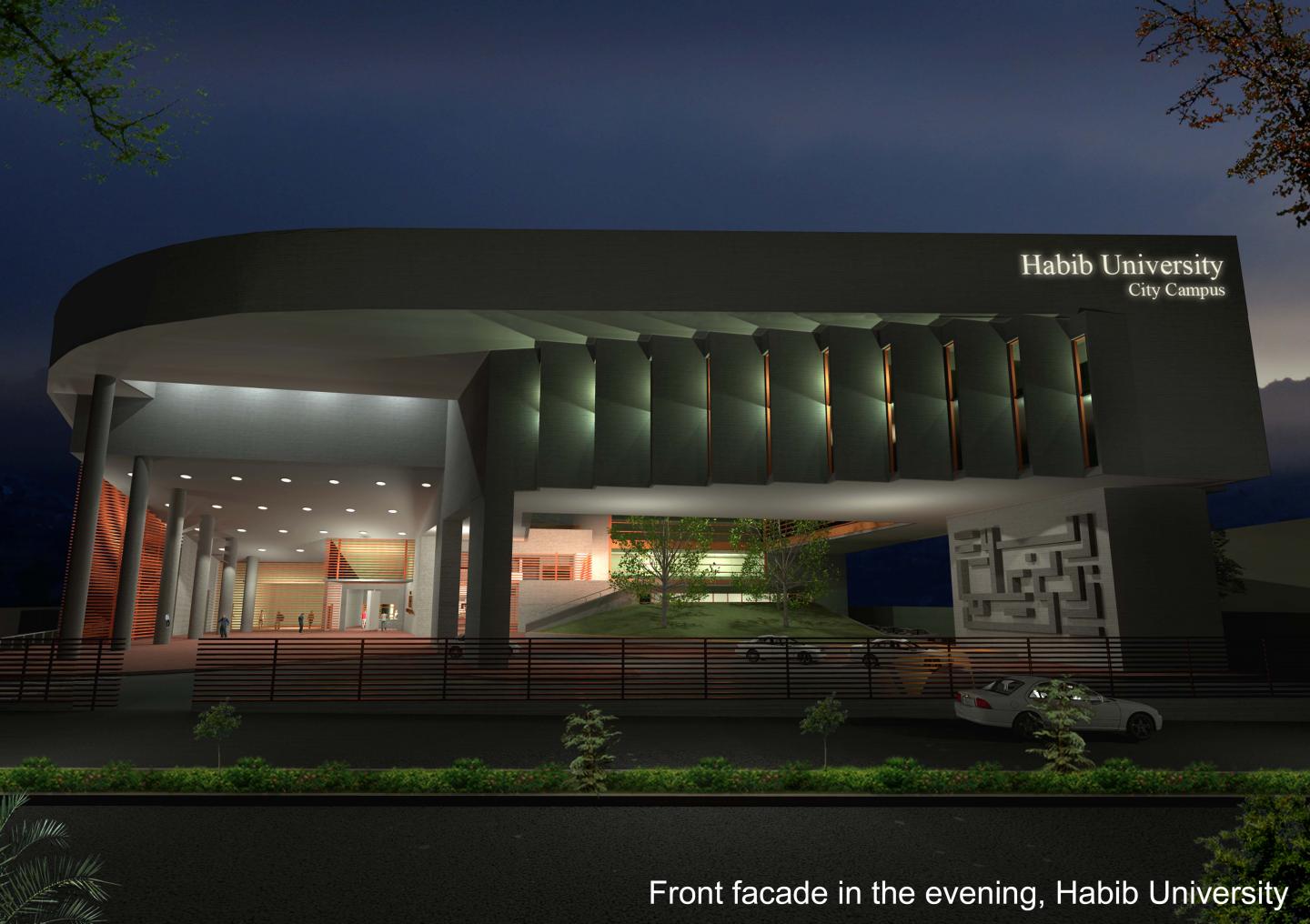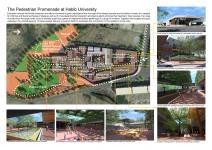Habib University (HU) is a first of its kind liberal arts university in Karachi, Pakistan. Three faculties – Science and Engineering, Arts and Humanities, and Entrepreneurship – will together impart a liberal arts undergraduate education unprecedented in Pakistan where these diverse disciplines are typically isolated in specialized institutions. Its academic vision has three elements: interactivity, openness, and environmental friendliness. These are interpreted by the architects for relationships to be nurtured between three stakeholders: the city of Karachi, students and teachers of the University, and nature. Consequently, three objectives emerge: diverse disciplines should actively interact while every student should enjoy both introspection and social engagement; openness should be facilitated with the city; and a degraded natural environment should be redeemed.
These objectives are challenged by a context inhospitable to them. The 6.79 acre site abuts natural storm-water rivulets long serving as open sewers of untreated effluent from upstream residential and industrial areas. Proximity to Karachi’s international airport imposes limits on allowable building heights, increasing density of footprint on the site. City-wide water shortages challenge green landscape and Karachi’s sustained problems with law and order demand a well-secured educational campus.
In post-colonial Pakistan the campus exemplifies how public institutions can interface with the city through form and function rather than physically buffer themselves from the public sphere.
The front facade is a perforated urban wall with the library and auditorium arrayed as semi public facilities along its edge. Effluent from the polluted rivulets is channeled in an enclosed conduit and the reclaimed land converted to a public park.
To retain the autonomy of each discipline while allowing abundant interaction, two introverted yet easily accessible academic courtyards are created while a recreational court with amphitheatre, gym, and indoor leisure center forms the heart of the campus. These three courts are connected with a central street, and a central sunken court caters for relaxed academic exchange at the cafeteria.
The flight-path around the airport stipulates precise limits on building heights tapering from sixty-five feet at the north end of the site to eleven feet at the south end. Mitigating to a degree the flight-path restrictions, the significant topographical depressions in the north-east and south-west of the site are used to create sunken courts and labs.
Time tested indigenous courtyards are adopted for their climatic and social functions. At the same time a morphology based on an accretion of masses is preferred over pure forms. This not only affords flexiblilty in planning but also evokes organically formed traditional cities of South Asia.
A civic institutional character dictates choice of materials. For easy maintenance and durability all buildings are proposed in textured, unpainted concrete, which is expected to be taken over in time by greenery. Retaining walls are of locally quarried yellow sandstone. Water is used as a cooling presence in the Arts and Humanities courtyard where building heights are too low to provide shadow. Terra-cotta tiles are chosen for exterior spaces to resist heat, and all roof surfaces are covered with white gravel to reflect solar heat as well as noise from the airport.
2010
Area of Site 6.79 Acres (295,800 sqft.)
Allowable Covered Area 100% (295,800 sqft.)
Ground Footprint Area 100,000 sqft. (34%)
Proposed Gross Built Up Area 350,000 sqft.
Parking (2 Levels) 350 Vehicles
Allowable Building Height 11 to 65 Ft. (Subject to height restrictions stipulated ) by Civil Aviation Authority
Proposed Building Height 11 to 65 Ft. Above Grade
Building Levels 6 Levels
Building Costs
(Shell & External Development) US $ 12 Million
Average Building Occupancy 900 Persons
Scope of Works on Project:
Master Layout Planning, Architecture, Interior Design, Landscaping & MEP Services
Architects: Ahed Associates
Managing Architect: Ejaz Ahed
Project Architect: Saifullah Sami
Graphics: Muhammad Ovais
Favorited 3 times










